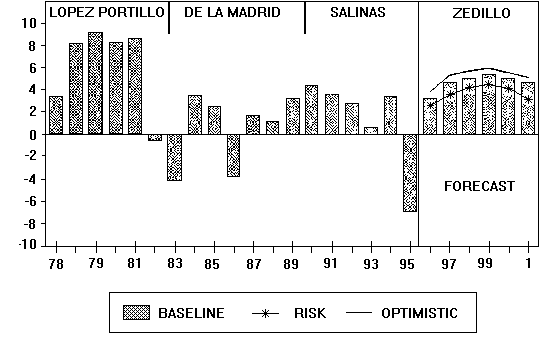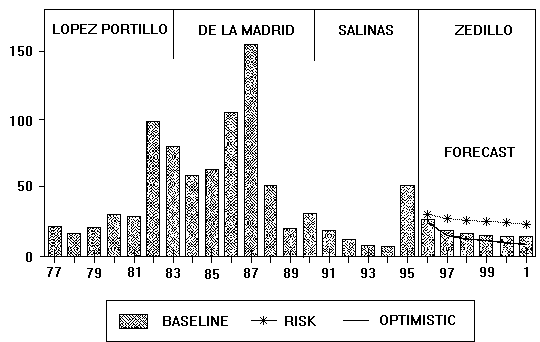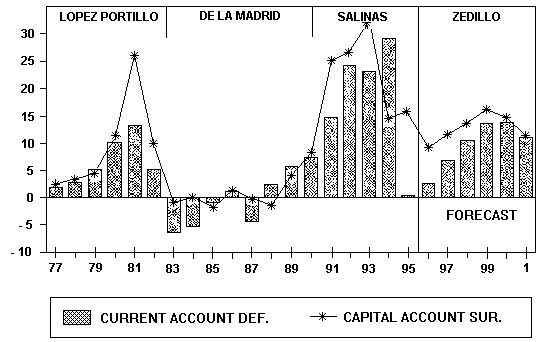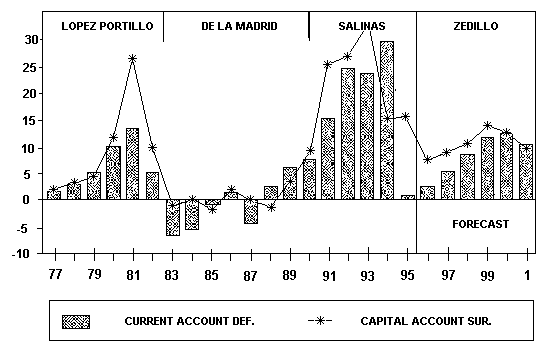|
THE MEXICAN EXPERIENCE Abel Beltran-del-Rio
In 1994-95 Mexico exhibited all the "pre-and-post" symptoms of a national financial crisis (of the variety common in our global times), detonated by the abrupt devaluation in the last days of 1994. Then, it received a huge foreign financial transfusion led by the US and subject to the IMF emergency medication; it endured the deep recession of 1995, and still is experiencing the economic, social and political after-effects. Despite the trauma of devaluation and ensuing difficulties, the surprisingly quick and strengthening GDP recovery of 1996-97 can be explained mainly by the advanced stage, by the end of 1994, of the modernization of its economy - one of whose next steps, in 1995, ironically was going to be the orderly transition to a more market determined exchange rate and the discontinuation of its extended use as a key anti-inflationary "anchor." This economic reconstruction, traceable to 1983, developed into a full-fledged economic reform by 1985, accelerated in the 1990's (with Nafta as one of its pillars), and still continues today. lts comprehensiveness was in response to the recurrent currency and financial crises suffered by Mexico since 1976. The most traumatic and stagflationary one, in 1982, led to the search for a full economic overhaul. Mexico set as its goals to minimize overdependence on oil exports, government disavings, external debt, price controls, and the "presidential economy" - susceptibility to the arbitrary will of one man, often at the end of his term.
The other main explanation of the V recovery is the new readiness of the
Mexican authorities to play by the emerging global rules, a change in mentality
and evidence of the continuation of the reform. A third, special, explanatory
factor is the border with the US, two thousand miles long - considered a menace
in Mexico in the 19 The device to avoid a return of instability due to presidential surprises is the advance of the political reform, the other side of modernization. The democratic process that was evident in the legislative elections of 1997 shows the commitment of the present administration to provide more economic certainty, via the political modernization.
MEXICO: REAL GROWTH (ANNUAL % CHANGE IN GDP)
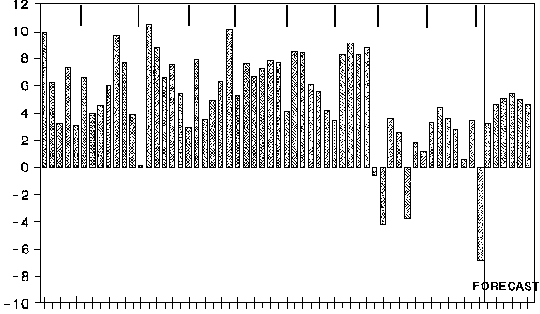
GRAPH 1
GRAPH 2
GRAPH 3
GRAPH 3A
|
